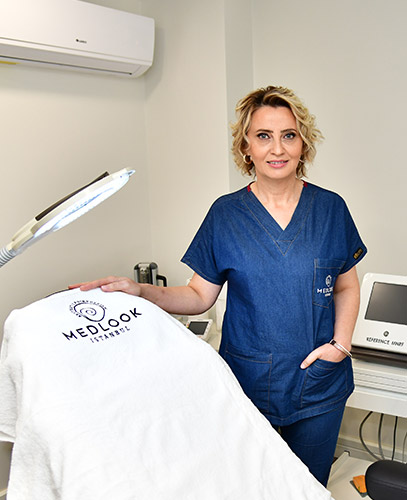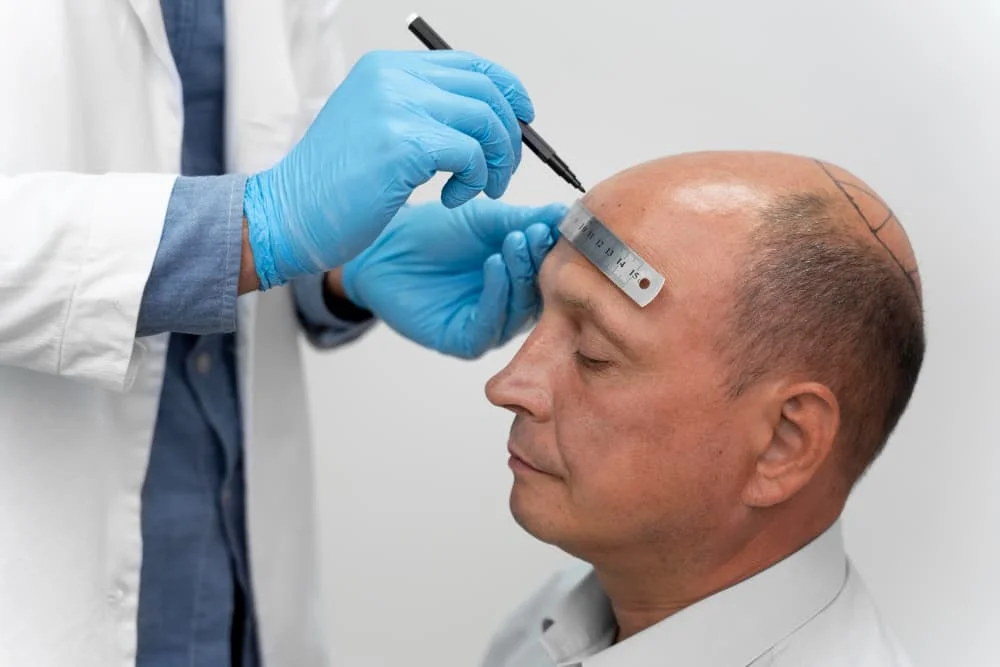
For those considering a solution to hair loss, hair transplantation offers a permanent and increasingly popular option. However, achieving a natural-looking and satisfying result that provides a full look depends on several factors. One of the most crucial elements is the density of hair transplants. This refers to the number of hair follicles placed within a given area.
We’ll delve into how density impacts the appearance of fullness and how experienced surgeons, like those at Istanbul Hair Institute, approach this critical aspect of the procedure to deliver optimal results.
Understanding Hair Transplant Density
In the context of hair restoration, hair transplant density refers to the number of hair follicles, or grafts, transplanted per square centimeter of the recipient area. Achieving the right density is paramount for a successful and natural-looking hair transplant. It’s one of the key elements in recreating a natural looking hairline and providing fullness.
Think of it like this: a sparsely populated field will look barren, while a densely packed one will appear lush and full. Similarly, higher graft density generally translates to a fuller, more voluminous look after the hair transplant.
It is important to understand the distinction between natural follicular unit density and overall hair density. Your natural hair grows in groupings of 1-4 hairs, known as follicular units. Follicular unit density is determined genetically. While surgeons aim to replicate natural density, several other factors also determine the number of grafts needed. Simply put, the higher the density, the more grafts will be required.
Factors Influencing Ideal Hair Transplant Density
Determining the ideal hair transplant density is a complex process that requires careful consideration of several factors. It’s not just about packing as many grafts as possible into the recipient area. Achieving a natural and aesthetically pleasing result requires a personalized approach. Surgeons must carefully balance the desire for fullness with what’s realistically achievable and sustainable long-term.
Here are some key factors that influence hair transplant planning:
- Hair Loss Pattern: The extent and pattern of hair loss, often categorized using the Norwood scale for men and the Ludwig scale for women, are crucial in determining the area that needs to be covered, and the density required.
- Donor Hair Characteristics: The characteristics of your donor hair play a significant role. This includes the thickness, texture, color, and density of the hair in the donor area. For example, thicker hair shafts can create the illusion of greater density with fewer grafts.
- Patient’s Age and Future Hair Loss: Younger patients may need to plan for potential future hair loss. A skilled surgeon will consider the possibility of further thinning in non-transplanted areas and plan accordingly.
- Scalp Laxity and Surface Area: The laxity or flexibility of the scalp affects how many grafts can be safely harvested. The size of the recipient area also dictates the number of grafts needed for adequate coverage.
- Patient’s Goals and Expectations: Ultimately, the patient’s desired outcome and expectations are paramount. Open communication between the patient and surgeon is essential to ensure that the planned graft density aligns with the individual’s goals for a full look, while maintaining a natural appearance.
Finding the Right Balance:
The art of hair transplantation lies in finding the right balance between maximizing density and achieving a natural-looking result. An experienced surgeon will consider all these factors to create a personalized plan that optimizes hair transplant density for each individual patient.
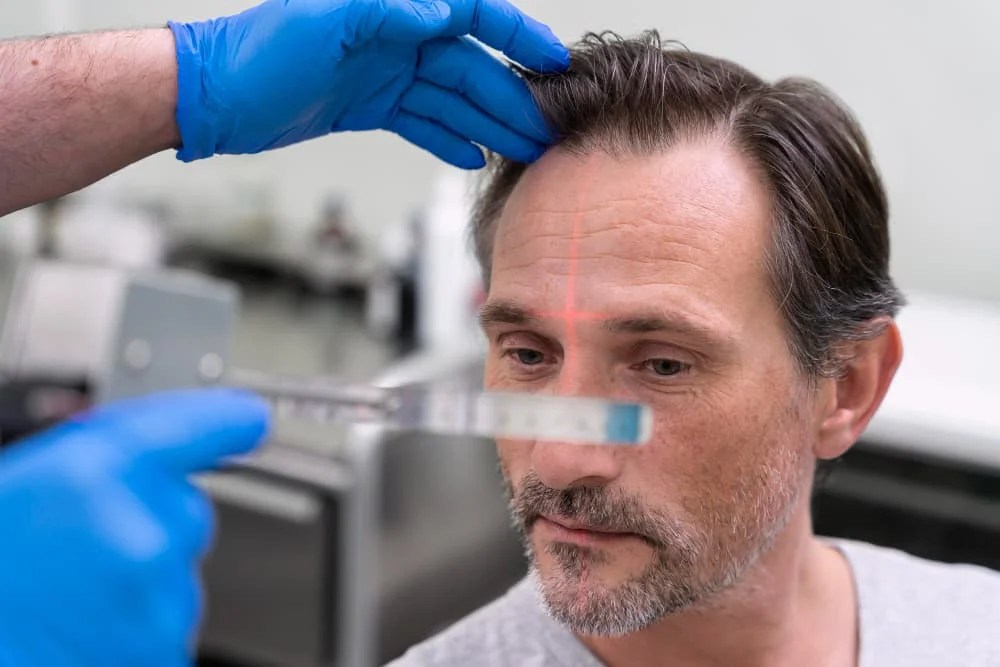
How is Hair Transplant Density Measured and Calculated?
Achieving the right hair transplant density is a critical aspect of planning a successful hair restoration procedure. It directly impacts the final aesthetic outcome and patient satisfaction. But how do surgeons determine the appropriate density?
Measurement and Calculation
Hair transplant density is typically measured in terms of grafts per square centimeter (grafts/cm²) or follicular units per square centimeter (FU/cm²).
- Follicular Units: Hair naturally grows in small groups called follicular units, typically containing 1-4 hairs each. Modern hair transplantation techniques, like Follicular Unit Excision (FUE) and Follicular Unit Transplantation (FUT), involve harvesting and transplanting these individual units.
- Grafts per cm²: This metric indicates the number of follicular units (grafts) that are implanted within each square centimeter of the recipient area.
Pre-Operative Planning and Assessment:
Before the procedure, a thorough assessment is crucial. Surgeons will carefully examine the patient’s scalp, considering factors like the extent of hair loss, the quality and density of the donor hair, and the patient’s desired outcome.
Digital Tools and Software:
Many clinics now utilize advanced digital tools and software to aid in planning. These tools can:
- Help map out the recipient area.
- Calculate the number of grafts needed to achieve a specific density.
- Simulate the potential results based on different density scenarios.
- Aid in creating a natural-looking hairline design.
The Importance of Follicular Unit Density:
Understanding follicular unit density is essential because it reflects how hair naturally grows. Surgeons strive to mimic this natural density when transplanting grafts, ensuring the transplanted hair blends seamlessly with existing hair.
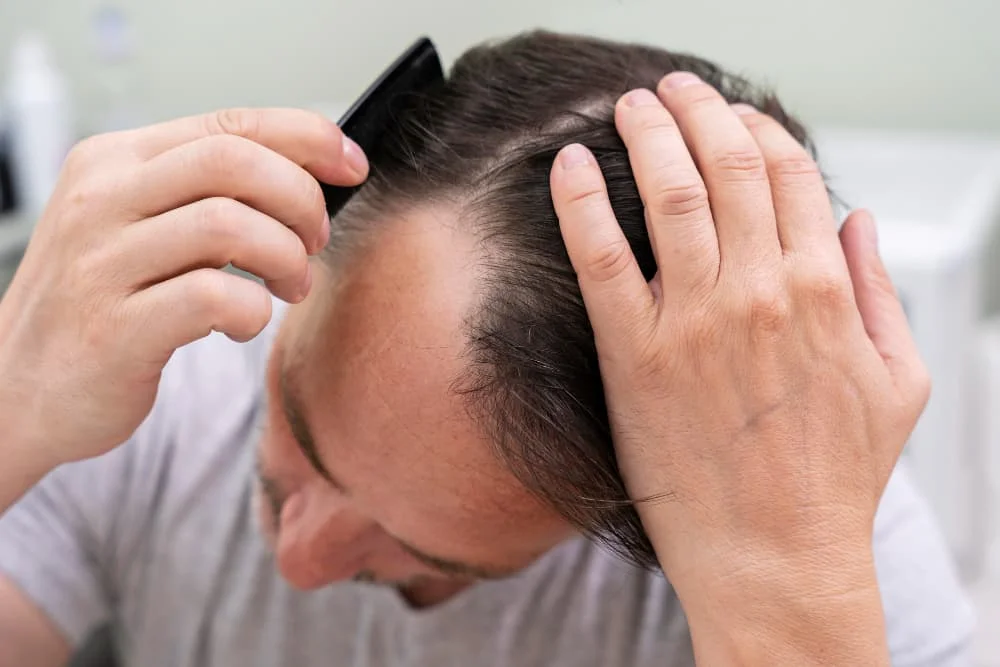
The Role of Hair Characteristics in Density Planning
Successful hair transplant planning goes beyond just the number of grafts. The characteristics of your existing hair play a vital role in determining the optimal hair transplant density for a natural-looking result. Surgeons must carefully consider these factors during the planning process.
- Hair Thickness: Individuals with thicker hair shafts naturally have greater visual density. Therefore, a patient with thick hair might require a lower density of transplanted grafts to achieve a full look compared to someone with finer hair.
- Hair Texture: Hair texture also influences the perception of fullness. Curly or wavy hair tends to provide more visual coverage and can create the appearance of greater hair density with fewer grafts compared to straight hair.
- Hair Color: The contrast between your hair color and scalp color impacts how dense your hair appears. For example, dark hair on light skin creates a more noticeable contrast, potentially requiring a higher density to achieve a full look compared to someone with light hair and a light scalp.
An experienced surgeon will take all these hair characteristics into account when planning your hair transplant to ensure your results are both aesthetically pleasing and tailored to your specific needs.
Potential Risks of Excessive Density
While striving for a full look is understandable, aiming for excessively high hair transplant density can be counterproductive and even detrimental. It’s a delicate balance, and here’s why:
- Compromised Blood Supply: Packing too many grafts too close together can compromise the blood supply to the scalp. This can hinder the healing process and jeopardize graft survival.
- Poor Graft Survival: When grafts are placed too densely, they may not receive adequate blood flow and nutrients, leading to poor survival rates. This means fewer grafts will take root and grow, ultimately diminishing the final result.
- Unnatural Appearance: Excessive density can result in an unnatural, “pluggy” look, where the transplanted hair appears artificial and doesn’t blend seamlessly with existing hair.
Therefore, a skilled surgeon will always prioritize creating a natural look with optimal density, rather than simply aiming for the highest possible number. This ensures both aesthetic success and the long-term health of your transplanted hair.
Recent Posts
-
 Effective Solutions for Seasonal Hair Loss: What Treatments to Consider04 Feb 2025
Effective Solutions for Seasonal Hair Loss: What Treatments to Consider04 Feb 2025 -
 Does the Density of Hair Transplants Matter? Achieving a Full Look04 Feb 2025
Does the Density of Hair Transplants Matter? Achieving a Full Look04 Feb 2025 -
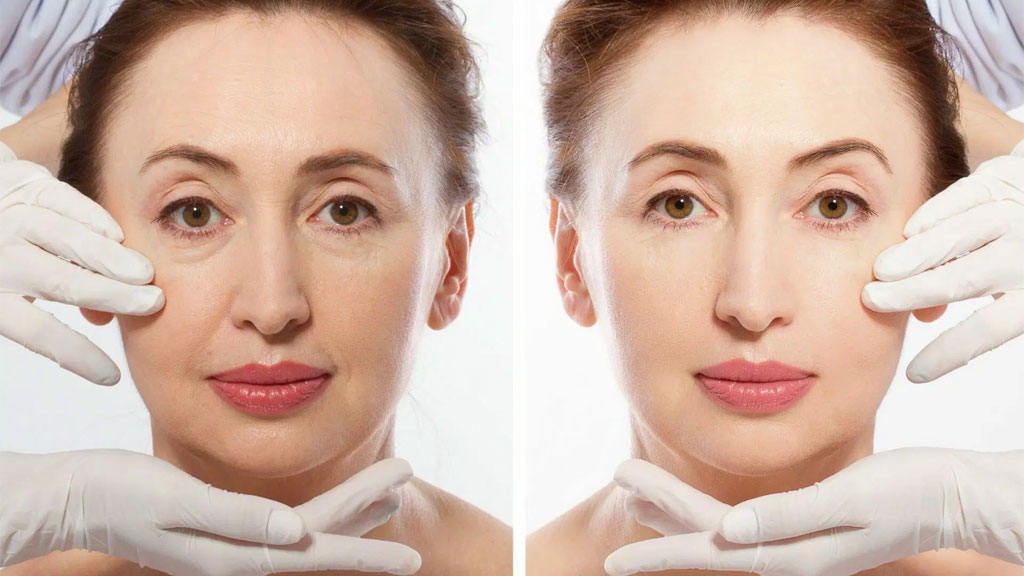 Look Younger: Mini Facelift and Neck Rejuvenation02 Feb 2025
Look Younger: Mini Facelift and Neck Rejuvenation02 Feb 2025 -
 Can Ozone Therapy Really Boost Your Mood and Energy Levels?02 Feb 2025
Can Ozone Therapy Really Boost Your Mood and Energy Levels?02 Feb 2025 -
 Say Goodbye to Static: How to Get Rid of Static in Hair29 Jan 2025
Say Goodbye to Static: How to Get Rid of Static in Hair29 Jan 2025
